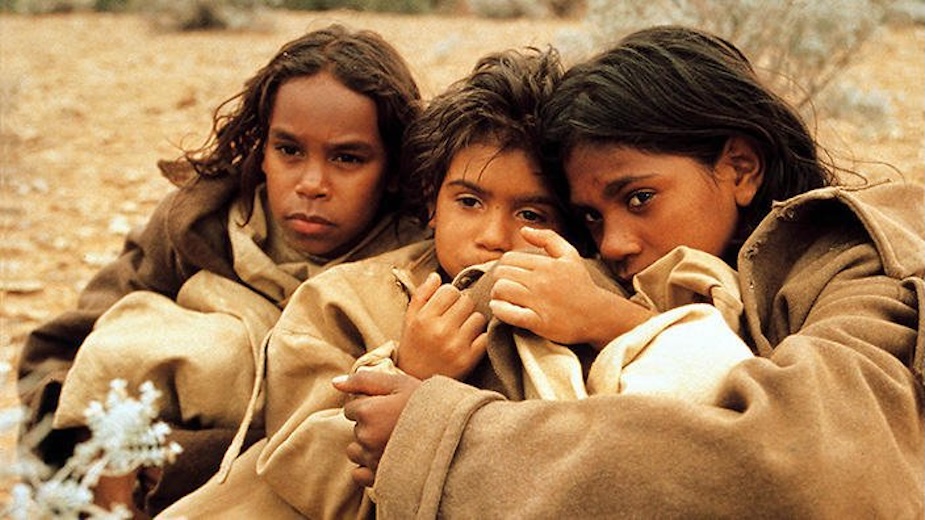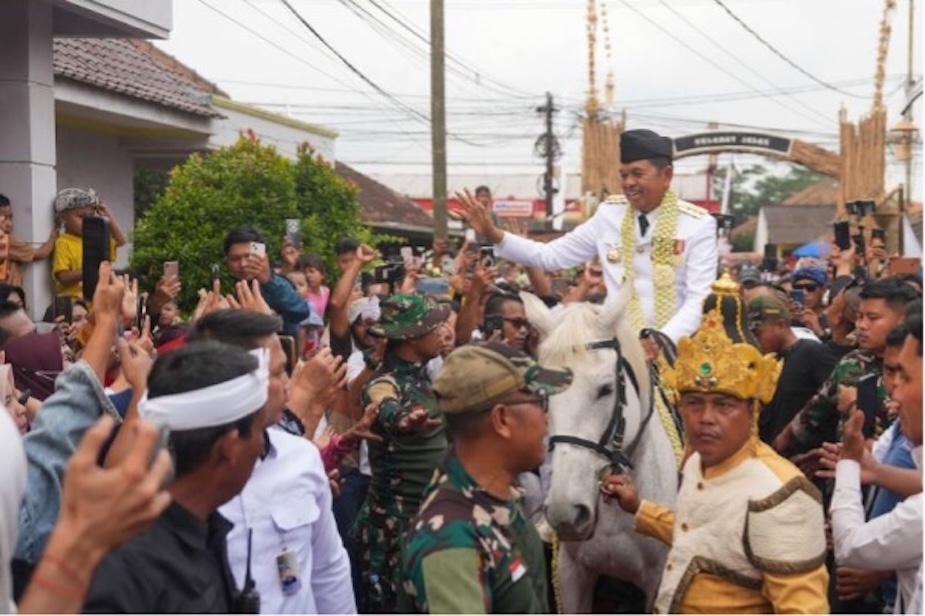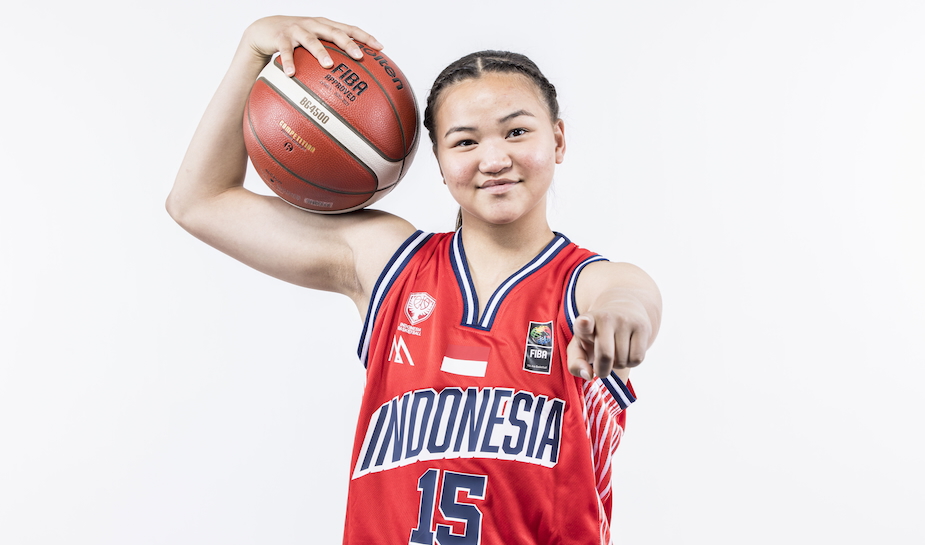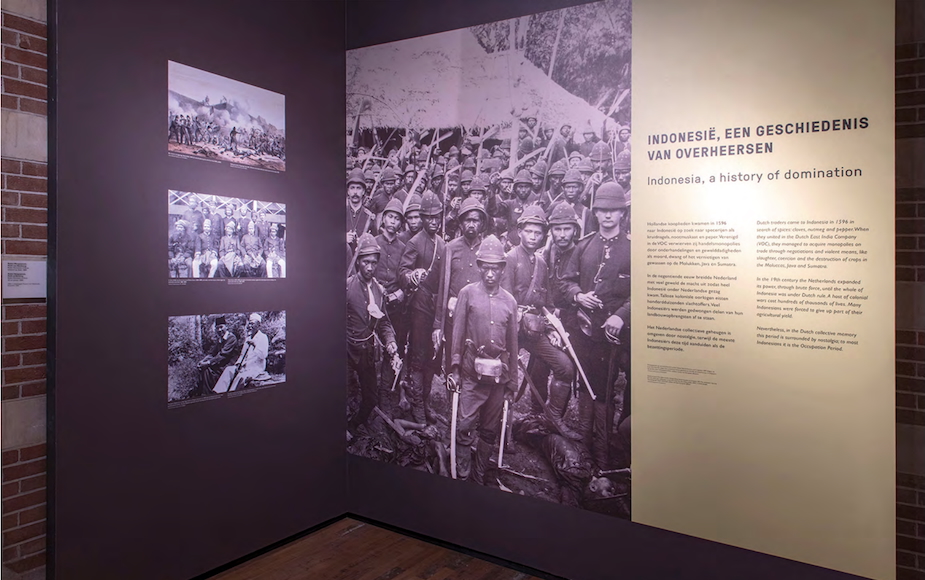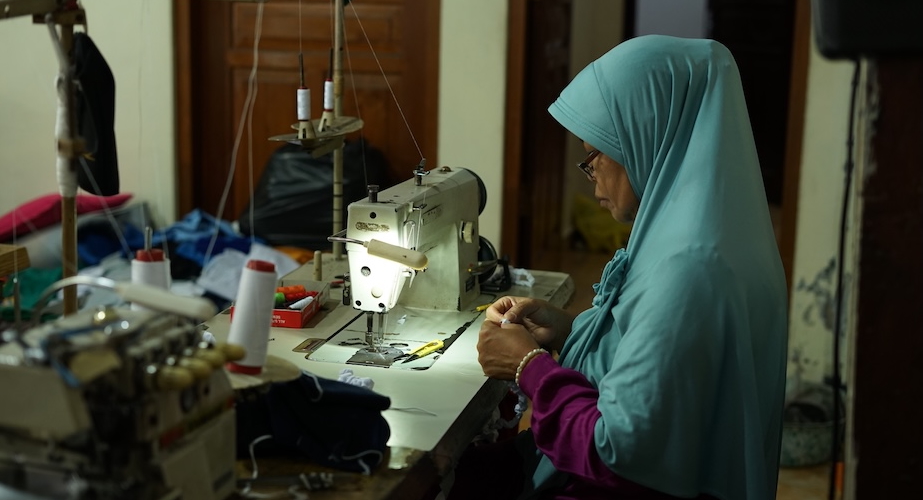Glossy magazines provide Islamic life-style guidance for middle class Muslim women which is more than skin deep
Virginia Hooker
Why would an intelligent middle class Indonesian Muslim woman buy a glossy fashion magazine? A letter to the editor of the stylish NooR magazine gives one woman’s reasons. In the October issue of 2010, Triya Cahya Puspita contacted NooR from Bali to say that with Allah’s guidance she had recently begun to wear a head scarf, or jilbab. Since then, she explained, she began to change in other ways – in her thinking, in what she did, and in what she purchased. She found many women’s magazines ‘vulgar’ and could not find one which was Islamic. Then in a bookshop near her home she came across NooR.
NooR answered her needs. The language, she said, was easy to understand and did not lecture readers. She found information which increased her devotion to Islam and strengthened her determination to be pious. Living in Bali where Muslims are in a minority, she found NooR’s guidance very helpful. As a bonus, she added, the diverse range of types and styles of jilbab showed her how to cover her hair elegantly and in the latest fashion.
‘Confident, Clever, Elegant’
NooR first appeared in 2002 and, despite fierce competition from a wide range of other glossies targeting urban, middle class, educated Indonesian women, it is still in demand and highly regarded. NooR’s motto, ‘Yakin Cerdas Bergaya’ (Confident, Clever, Elegant) discreetly placed at the top of the magazine’s cover, sets a tone of assurance, professionalism and style. And this is what it delivers.
The cover photo usually features a well-known Indonesian, woman or man, whose attractive image is partially over-written with a list of the five main features of the issue. As a monthly, NooR is substantial, always 146 pages. The paper is smooth, the photos impeccably presented, and the lay-out uncluttered and often placed in boxes for ease of reference. The price is between Rp.29,000 and Rp.39,000 (A$3.40 to A$4.50) and it is readily available from agents across the archipelago.
The editor is able to weave the personal with more general social or religious principles
A double-spread contents page lists the four categories of material in each issue: articles, fashion, cooking, and regular features. The latter include obviously popular articles. There are notes on recent electronic gadgets and equipment, notices about new books and films, social pages, and one page of fashion design sketches which dressmakers can copy to sew their own. A warm, friendly ‘Welcome’ article by general editor Jetti R. Hadi invites readers to share a recent experience which has caused her to reflect on deeper aspects of life. Invariably she is able to weave the personal with more general social or religious principles which contribute to the common good and social interactions. Her touch is so light that, as Triya Cahya Puspita noted, readers do not feel lectured or talked down to.
‘Don’t catch the holiday virus!’
This is the cover description for NooR’s main theme in the June 2010 issue. In contrast to the rather frivolous play-on-words title on the cover, the six or seven major articles discussing aspects of ‘holidays’ are well-argued and thoughtfully presented. Readers are assured that holidays are an essential balance to work and the stresses of daily life. They are reminded of the Qur’anic verse 28:77, ‘Seek the life to come by means of what God has granted you, but do not neglect your rightful share in this world…’. The Prophet Muhammad, several contributors write, always found time to relax with his family. A religious teacher writes that the Messenger of God divided his spare time between his wives, family, and friends and still performed his personal devotions.
Another contributor notes that the Prophet’s Companion and son-in-law, Ali bin Abi Thalib, recommended resting the heart and spirit for a time. He said that like the physical body, our spiritual selves can become jaded and tired and need to be refreshed. It is this concept which several of the NooR articles develop for their readers. Holidays should be planned to maximise rest and renewal. On returning to normal life, we will have greater energy and dynamism, and be more diligent and productive in the tasks God encourages us to undertake. In this sense, the articles advise, holiday time is the opportunity to heighten spirituality and re-dedicate ourselves to serving God.
The emphasis on recharging and rededication is continued in articles about the need to budget for holidays. Just as satisfaction with a holiday depends on careful planning of activities and time, so too is matching the holiday budget to individual means and circumstances. All the holiday articles warn that credit cards should not be over-used while on vacation. It is essential, they urge, to ensure that financial commitments for household needs, education and health, the basic priorities for all families, are fully covered before even considering spending extra on a holiday. There is no need to leave home or leave one’s town, to take a holiday. Children can be taught that there are creative activities such as visiting museums, play areas and historical sites which are not expensive.
Several of the articles provide dot point summaries (called ‘Tips’) of their main points. The seven ‘tips’ for an Islamic holiday include the following: be creative in your definition of ‘holiday’ so that it matches your budget; don’t feel constrained by lack of money for your holiday but thank God that you have the opportunity to have one at all; the experience of taking your holiday within your budget will bring its own insights; continue your devotions and arrange to perform your prayers during your holidays so that you stay connected with God. In this way, readers are assured, their holiday will be both beneficial and in accordance with syariah.
The treatment of ‘holidays’ in this issue is typical of Noor’s approach to the issues its editors choose as themes. NooR acknowledges the realities of the modern world and acknowledges that sometimes participating in contemporary life causes dilemmas for those who want to be good Muslims. So it offers its readers advice about how to participate in the real world in an Islamic way. To re-assure readers that the advice can be trusted, NooR supports its ‘tips’ with references to the Qur’an and hadith, the basic and authoritative sources for Islam. Being a devout Muslim, Noor implies, does not mean withdrawing from the normal activities of daily life.
‘Chic, Comfort, and Covered’
This is the description written beside one of the beautiful fashion garments modelled in the ‘up to date’ fashion section of NooR. In her letter to the editor, Triya Cahya Puspita specifically mentions her reliance on the jilbab fashions in Noor, which keep her in touch with the latest styles in head coverings. The fashion focus in NooR is comprehensive, extending beyond head coverings (which can be simple or very complex) to high fashion wear, shoes, bags, and jewellery. Beautiful models wear exquisite Islamic fashions for men as well as women. Every garment meets the Islamic dress code requirements of complete covering of a woman’s body from head to ankle, and a man’s from neck to ankle.
 |
|
‘Lamp of the Heart’ features describe Muslim women helping others. This group teaches working class women religion as well as skills to improve their livelihoods / Ade, courtesy NooR |
Each issue of NooR features a particular local Indonesian textile, fabric, or ethnic pattern, introducing readers to the specialty textiles, weavings, embroideries, printing and dyeing techniques from different regions of Indonesia. But there are also many garments made from tulle, chiffon, silk, polyesters and similar fabrics. Only the creations of Indonesian designers are featured, showcasing their originality and sense of style.
Many of the fashions featured in each issue are linked with the issue’s theme. In the holiday issue, for example, a series of fashions for holiday wear is included. The holiday wear is casual and comfortable and features cotton textiles. A brief note states that while readers are on holiday and spending time outdoors the beauties of nature will remind them of God’s great love for all His creatures.
International Islamic fashion
The Indonesian Islamic Fashion Consortium (IIFC) organised a series of lavish events in Jakarta during August and September 2010. The success of the events inspired the organisers to start planning to make Indonesia the centre of world Islamic fashion by 2020. The IIFC has already taken the initial steps in this ambitious enterprise. It has brought together the relevant sections of government and private industry to develop a ‘roadmap’ of what needs to be done. Marketing and production are the key areas for action and already the group is planning to capture markets in the Middle East, America and Russia.
The early stages of the new initiative are described in the October 2010 issue of NooR. The magazine’s interest in a major fashion initiative may reflect the fact that Jetti R. Hadi, NooR’s chief editor, is Director of Education for the IIFC. But NooR has a history of consistent commitment to supporting quality Indonesian handicrafts and Indonesian design. NooR’s articles present readers with the best of Indonesian Islamic fashions and educates them about the local history and indigenous knowledge which has produced a textile and garment tradition.
The ambitious plan to make Indonesia the centre of international Islamic fashion supports another of NooR’s philosophies. Industry, at both the individual and group level, is a continuous theme in issues of the magazine. For NooR, the work ethic is a God-given responsibility, and providing training and employment for Indonesians is a service to one’s fellow human beings. Any major growth in the Islamic fashion industry supports these aims and one IIFC estimate suggests as many as four million jobs could be created if Indonesia becomes an international clothing manufacturer. It is not coincidental that the majority of workers and customers for Islamic fashions are women. Some of Indonesia’s leading fashion designers are men, but NooR features many who are women. Similarly, most of the fashions pictured in NooR are for women. NooR is a woman’s magazine.
Target audience
NooR is just one of many glossy magazines vying for a share of an urban middle class Muslim market seeking guidance on how to express religious piety and Islamic identity. Typically these newly affluent Muslims have not had a formal Islamic education and lack confidence about their knowledge of Islam. If they have the time and inclination, individuals can get the guidance they seek from religious study groups, religious lectures, and televised question-and-answer shows. But a magazine can be read at any time, anywhere, and for lengthy or brief periods. The Indonesian publishing industry has identified the potential of magazines which reflect the concerns of this middle class and provide them with information and advice to match their concerns.
NooR’s articles indicate that its target audience is married women. Although the ‘up to date’ fashion designs are modelled by women in their early 20s, there are many feature articles about mothers with young families. Most of the advertisements – for Islamic banking products (credit cards and insurance), travel to the holy land, and clothing – are aimed at families. Advice columns on appropriate Islamic behaviour respond to questions which concern married couples or women with children.
Unlike other magazines for women, NooR does not carry advertisements for cosmetics, beauty treatments or hair products. Nor does it feature advertisements for the common Indonesian complaints of sore eyes, nasal problems or stomach complaints. Readers of NooR doubtless have need of those items from time to time but they do not turn to this magazine for advice on which brand to buy.
The main competitors for NooR are the similarly pitched Paras and Alia. The latter have estimated monthly readerships of 25-30,000 while NooR ranges between 12-15,000. Exact figures are difficult to obtain and these figures are based on phone surveys so serve as a rough guide only. NooR, however, is older than either Paras or Alia and so has proven staying power. It is also distinguished from them by its subtle but persistent expressions of piety. Only NooR consistently devotes several whole pages of each issue to a verse from the Qur’an or a saying attributed to the Prophet (hadith). These words of wisdom are set in a decorated medallion or circle and seem selected to inspire and uplift readers. Their messages reinforce and add authority to NooR’s articles of religious advice and guidance.
Spiritual light
‘Noor’ (also spelt ‘nur’) means ‘light’ in Arabic. Muslims know that Chapter 24 of the Qur’an is entitled ‘Light’ and are familiar with the verse ‘God is the Light of the heavens and earth… God guides whoever He will to his Light…’, (Qur’an 24:35). The choice of this symbolically charged word as the magazine’s title is literally inspired. It signals to readers that Islam, truth and piety form the basic principles which guide the magazine’s aims and contents. Readers may turn to NooR for guidance and illumination.
‘Light’ is used as a theme in several sections of the magazine. It appears as the title of a regular section called ‘Lentera Hati’ (lamp for the heart). Every month this section focusses on a religiously inspired group which works for society’s poor or disadvantaged. For example one Lentera Hati article describes a religious study group (majlis taklim) of upper middle class women. These women decide to invite local domestic workers, garbage re-cyclers and others to join their group. There they learn how to recite and understand the Qur’an but they are also taught basic skills that bolster their self-esteem and improve their employment opportunities. As a result some of these women have been able to leave their former jobs and work in shops, kindergartens, or establish their own small businesses. Lentera Hati is linked with a Jakarta radio station, Delta FM (‘Decision Makers for a Brighter Indonesia’), which broadcasts reports about these kinds of activities in a daily morning slot. Through the airwaves, NooR’s material is reaching a far greater audience than readers who buy the hard-copy magazine.
The real-life stories in Lentera Hati suggest that while NooR is offering advice to its readers, at least some (if not more) of those readers are in their turn helping and advising other Muslim women. NooR’s target readers are middle-class,professional or semi-professional women who, like Triya Cahya Puspita, want to be ‘Islamic’. They are attracted to an interpretation of Islam which is moderate, inclusive, in tune with modern life, and supportive of careers for women. Noor offers its readers an Islam which is expressed in every day life – through dress, housing styles, education of children, management of money, and social service. This magazine and others like it show the range of advice and guidance available to Muslim women who are searching for ways to deepen their religious knowledge and express their Islamic identity.
Virginia Hooker (Virginia.Hooker@anu.edu.au) is a Visiting Fellow in the Department of Political and Social Change, College of Asia and the Pacific, The Australian National University. She would like to thank Ibu Jetti R. Hadi for permission to reproduce materials from NooR. She also wishes to acknowledge the help of Greg Fealy (ANU) and staff of the National Library of Australia, particularly Anya Dettman, Elizabeth MacKenzie and in Jakarta, Wishnu Hardi.





